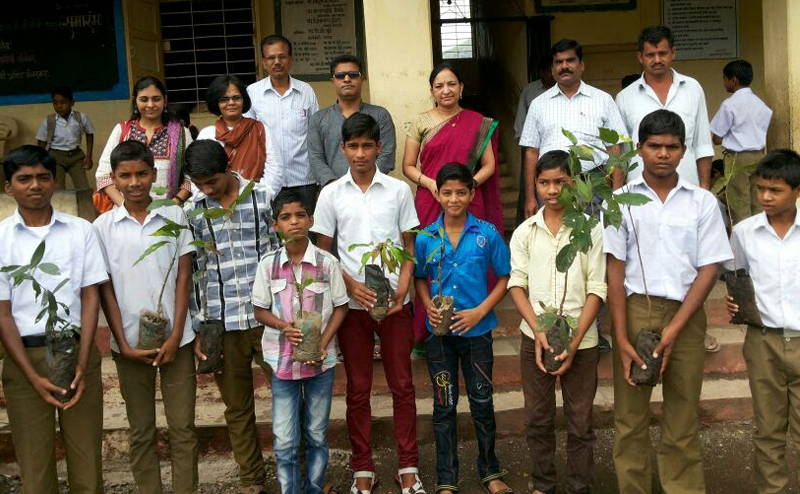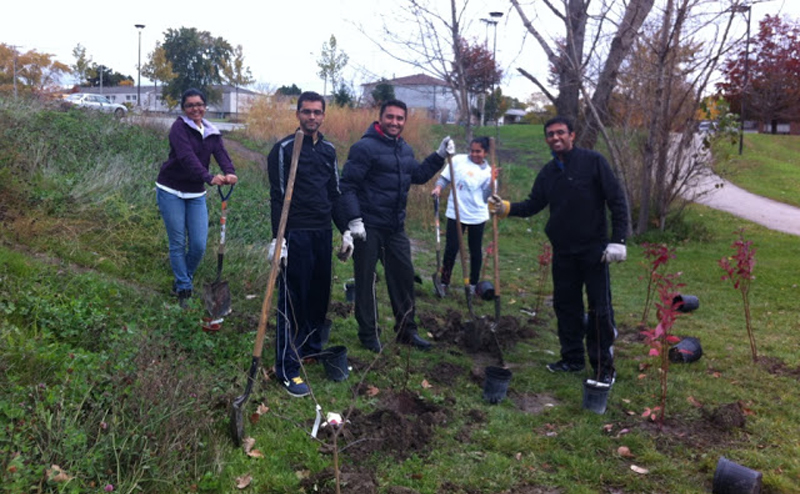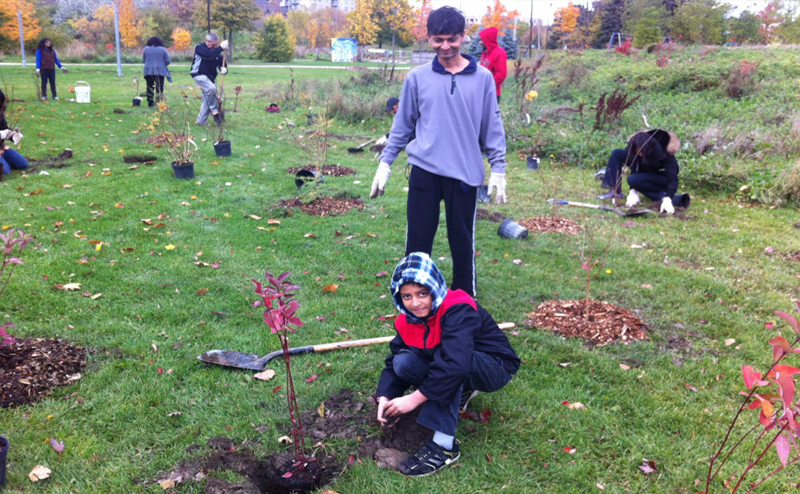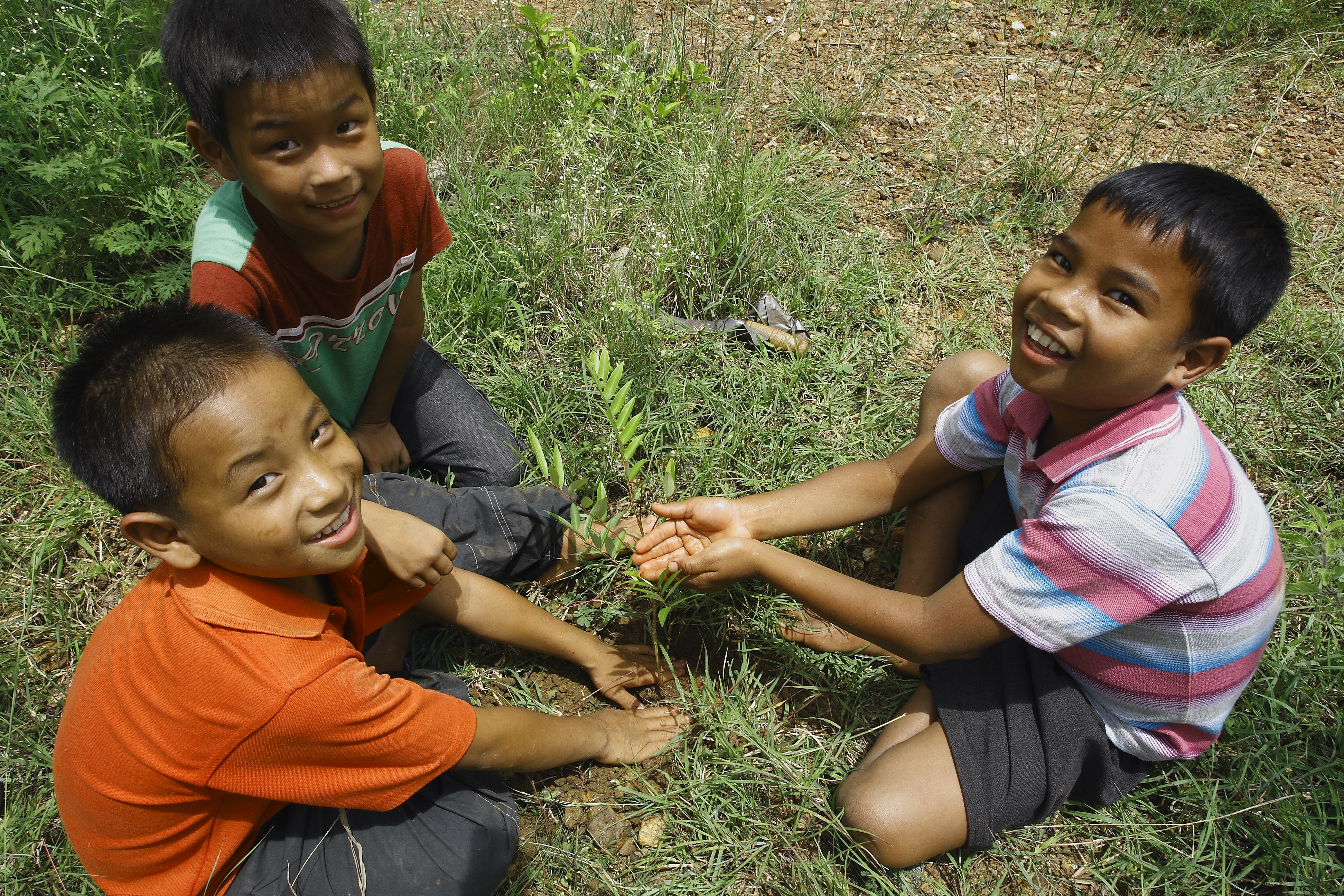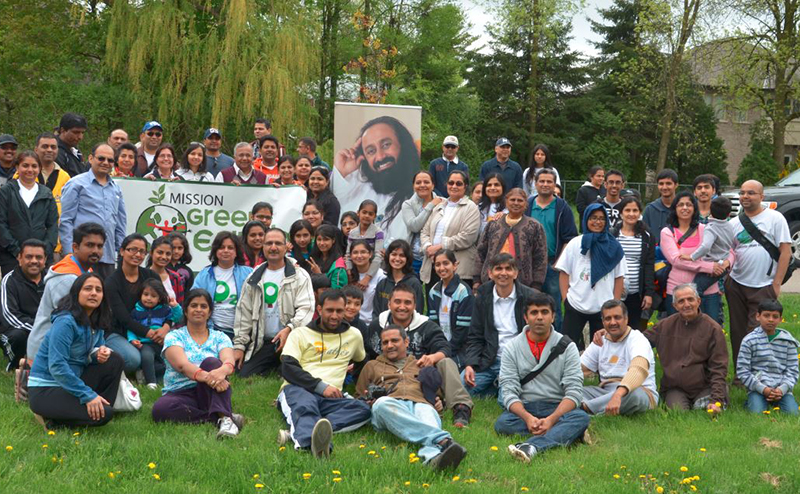Trees plantation
Towards a greener planet
Art of Living’s IAHV (AOL) has been leading efforts in its resolve towards environmental sustainability. Over the past years, India has experienced threat to its vast forest cover, as trees are felled for modernization, firewood and pasture. Trees impound carbon dioxide from air, thereby reducing the amount of greenhouse gases in atmosphere. Therefore, AOL has pitched in to help the country fight climate change. It has spearheaded many eco-friendly initiatives in its campaign against global warming.
Go Green
Art of Living is committed in its cause to preserve a green planet. Innumerable initiatives such as rural development program to save environment have been initiated to further the cause. Volunteers across the globe work tirelessly to make this dream a reality by planting trees and protecting as many indigenous species as possible. A great inspiration and role model, indeed!
Grow trees, save environment
Forests are home to many indigenous species which are critical to maintain balance of eco-system. Trees are necessary to preserve nature to benefit present and future generations. They are indeed custodians of our planet.
There is an ongoing project in Maharashtra which deserves special mention in this regard. Manjara is one of the many rivers in Maharashtra rejuvenated by Art of Living. The volunteers have planted 5000 trees in Takali village and more than 2000 trees in Nagsari village. Both villages are on Manjara river site, with forest land of 40 acres in total. The project started in Sept 2016 and is still in progress. Several volunteers are involved in this project on a contious basis. Different varieties of trees like Bargat, Pimpal, Amala, Neem, Black Jamun, Custard Apple, Tamarind and Bamboo have been planted. Indigenous varieties are hardy and can survive harsh Indian Summers and generally need less water. It helps restore the original ecosystem of the place and is now home to many birds and small creatures.
Innovative methodology
Planting trees and ensuring that the survival rate is high is one of the responsibilities that Art of Living takes seriously. It is promising to note that trees planted have achieved a 90% survival rate. This has been possible due to various methodologies being incorporated including organic techniques for proper plantation and drip irrigation.
Furthermore, protection from animals by digging deep trenches is another cost effective technique adopted here. Daily monitoring on a continuous basis has been a critical factor to detect and avoid any unforeseen mishaps. This process is scheduled for another year, after which trees will continue to grow naturally.
How is the area identified for tree plantation? As part of river conservation process one of the activity is to plant trees. The Catchment area / watershed region is apt for planting trees. It not only increases the green cover but also helps in conserving rainwater.
In the case of Takali tree plantation drive identifying acres of barren government land for creating model social forestry sites within watershed boundaries helped in reducing individual land preparation costs at multiple locations for planting many saplings. Installation of drip Irrigation systems brought down water footprint and thereby maintenance costs significantly.
Creation of deep trenches around the social forestry sites helped in reducing sapling protection costs significantly as compared to building 7,000 individual tree-guards around each sapling to protect them from being eaten by local cattle.
Deep trenches The volunteers dig 10 feet deep trenches and created bund with the same mud (almost 4-5 feet high) using Porcelain machine to safeguard newly-planted saplings from nearby cattle. In addition, these trenches help in harvesting rainwater and thereby keeping soil moisture content high during post-monsoon season, which is very critical for high survival rate of saplings.
The plan behind the action The vision is to create model forestry sites in barren community land that would not only help in rejuvenating rivers and water bodies in a piecemeal fashion but also in rejuvenating air and soil in a wholesome fashion, i.e. entire ecosystem consisting of not just humans, but also birds, insects, animals, and trillions of microorganisms hiding in the soil. In achieving this vision, selection of saplings along with the order and spacing with which they are planted plays a critical role for the site to act as a self-sustaining ecosystem service provider for the village.
Mahadev Gomare who heads the initiative summarizes, ‘My prime responsibility is in assimilating the best practices followed from across the world and complementing it with our ancient wisdom in creating a self-sustaining forestry site that needs no maintenance after three years.
What the villagers have to say:
- Sriram Salunke, Sarpanch, Nagzhari: The plantation sites that have been created in Nagzhari and Takali villages shall be very beneficial for the environment and local atmosphere. Moreover, our kids can eat the native varieties of fruits grown in these plantations.
- Pratap Ufade, Farmer, Takali: The plantation site created by the Art of Living in our village is a blessing to all of us. Natural wealth that was lost in this village is restored because of this project. We are very happy to see all the plants grow so swiftly.
- Rouf Patel, Sarpanch, Indrathana: “Nandanvan” has been created on barren government land that was lying just like that in my village because of the Art of Living’s project. This will help in reviving the lost biodiversity in our river bank.
In Karnataka, similar tree plantation drive has been carried out near the Kumudavati and Vedavati catchment area. Exotic varieties of plant such as Eucalyptus and Acacia around the path of Kumudavati have been the major cause of water depletion in the river as these are water guzzling plants.
Attempts have been made to plant local and indigenous varieties of plant that will grow well and restore the environmental balance of the area.A ‘Narayana Vana’ has been created at Kaiwara, as part of the rejuvenation project. There are 32 species of rare and endangered plants, like Sita Ashoka (helpful in relieving stress and addressing gynecological problems), Kadambi (traps dust) and Atti tree (other organisms and birds nest in this tree). In total, there are around 200 trees and 2,000 herbs and shrubs in this Vana.
- 42,500 trees planted around Kumudavati River
- 10,000 near Palar river
- 2000 around Vedavati river site
- Worldwide Art of Living has initiated planting of 71 million trees

